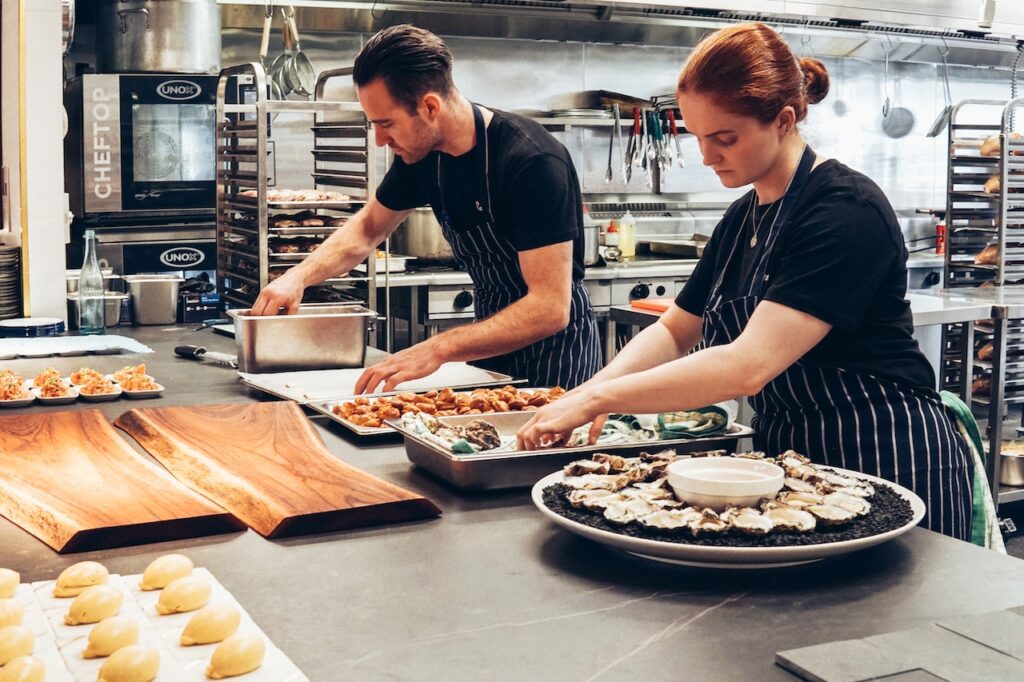1. Overcoming Overcooked Food: Saving Your Dishes
Overcooking can happen to even the most experienced cooks. Here’s how Spice Savvy Kitchen can help you rescue your meals:
Meat Overcooking: Overcooked meat can become tough and dry. To save it, consider techniques like braising. Simmer the meat in a flavorful liquid (broth, wine, or sauce) to reintroduce moisture and tenderness. The low and slow cooking process will help break down tough fibers and make your dish enjoyable again.
Overcooked Pasta and Grains: If you’ve overcooked pasta or grains like rice, it’s not the end of the world. Drain the excess water and transfer the grains back to the pot. On low heat, gently steam them while stirring in a bit of olive oil or butter. This will help restore some moisture and flavor while maintaining a pleasant texture.
2. Salvaging Undercooked Dishes: Turning Raw into Remarkable
Undercooking can leave your dish unappetizing, but Spice Savvy Kitchen has solutions:
Undercooked Meat and Poultry: If you realize your meat is undercooked, don’t panic. Preheat your oven to 350°F (175°C) and place the meat on a baking sheet. Continue cooking until it reaches the desired internal temperature (use a meat thermometer for accuracy). This will ensure it’s safe to eat while preserving its juiciness.
Undercooked Vegetables: Undercooked vegetables can be crunchy and unpalatable. To salvage them, sauté them in a pan with a bit of oil or butter. Cover and cook over low heat, stirring occasionally, until they reach your desired level of tenderness.
3. Taming the Salt Monster: Rescuing Overly Salty Food
We’ve all accidentally added too much salt. Here’s how to dial it back:
Dilution Techniques: For soups, stews, and sauces, dilution is your best friend. Add more unsalted liquid, such as water, stock, or cream, to reduce the salt concentration. Taste as you go to achieve the desired balance.
Starchy Saviors: Starches like rice, pasta, or potatoes can absorb excess salt. Cook a batch of your chosen starch without salt and mix it with the salty dish. The starch will help soak up some of the excess salt and restore the flavor balance.
4. Fixing Flavor Imbalances: Achieving Harmonious Tastes
Balancing flavors is an art. Spice Savvy Kitchen can guide you:
Too Sweet: To counter excessive sweetness, add acidity or bitterness. For example, in a too-sweet sauce, a splash of vinegar or a pinch of red pepper flakes can help balance the flavor.
Too Spicy: To tone down excessive heat, consider adding dairy, like yogurt or cream, to your dish. The fats in dairy products can help mellow the spice. You can also incorporate sweetness, such as honey or sugar, to counteract the heat.
Too Bland: To elevate a bland dish, focus on layering flavors. Add herbs, spices, or aromatics like garlic and onions. Consider using umami-rich ingredients such as soy sauce or Parmesan cheese. Taste as you season to ensure a balanced and flavorful outcome.
5. Battling Burnt Bits: Rescuing from the Brink of Disaster
Burnt food can be discouraging, but don’t give up hope:
Saucepans and Pots: If you’ve accidentally burnt a sauce or stew, don’t scrape the burnt layer into the dish. Instead, carefully pour the unburnt portion into a clean pot, leaving the burnt residue behind. Adjust seasonings as needed, and your dish will be back on track.
Baking Mishaps: For burnt edges or crusts on baked goods, use a sharp knife or a grater to remove the burnt portions gently. Then, consider using a simple syrup to moisten the affected areas and add sweetness.
6. Dealing with Recipe Substitutions: Making It Work
Ingredient substitutions can be tricky, but Spice Savvy Kitchen can help you navigate them successfully:
Ingredient Substitution Tips: When substituting ingredients, consider the flavor, texture, and function of the original ingredient. For example, if a recipe calls for buttermilk, you can use plain yogurt as a substitute. It provides a similar tanginess and moisture content.
Rescuing Texture: If a substitution alters the texture of your dish, you can often adjust it with small tweaks. For instance, if you’ve used a gluten-free flour that resulted in a crumbly texture in your baking, add a little xanthan gum or guar gum to improve the binding properties.
Conclusion: Spice Savvy Kitchen – Your Culinary Troubleshooting Companion
In the world of cooking, mistakes are inevitable, but they don’t have to be catastrophic. Spice Savvy Kitchen is here to be your culinary troubleshooting companion, helping you overcome common cooking mishaps with confidence. Armed with our detailed insights and practical solutions, you’ll be better equipped to navigate the challenges of the kitchen and turn potential disasters into delicious triumphs. Start your journey to culinary excellence with Spice Savvy Kitchen today!

